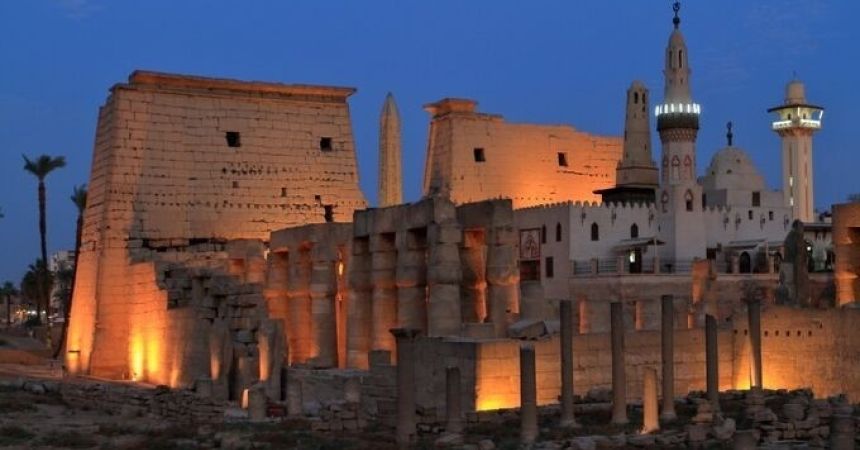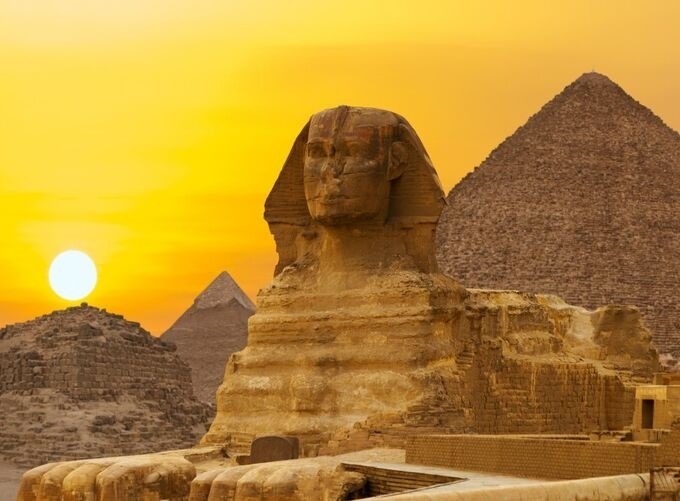
Egypt’s Hidden Gems – A Traveler’s Secret Guide
While Egypt is renowned for its iconic landmarks such as the Pyramids of Giza, the Sphinx, and the temples of Luxor, the country is also home to a myriad of hidden gems that offer a more authentic and less crowded experience. Exploring these lesser-known sites allows travelers to delve deeper into Egypt’s rich history, vibrant culture, and breathtaking landscapes. In this blog, we will uncover some of Egypt’s hidden treasures, providing insights into their significance, history, and practical tips for visiting.
Siwa Oasis: A Serene Escape
Located in the western desert near the border with Libya, Siwa Oasis is a tranquil retreat known for its stunning landscapes, lush palm groves, and unique cultural heritage. This remote oasis is home to the Berber people, who maintain a rich and distinct culture.
Historical Significance
- Oracle of Amun: Siwa was once home to the famous Oracle of Amun, where Alexander the Great visited to seek guidance and affirm his status as a divine ruler. The oracle’s temple remains a significant archaeological site.
- Traditional Architecture: The mud-brick buildings of Siwa showcase traditional Berber architecture, with intricately designed facades and beautiful decorations.
Key Attractions Egypt
- Shali Fortress: Explore the ruins of Shali, an ancient fortress made of kershef (a local building material). Climbing to the top offers panoramic views of the oasis.
- Cleopatra’s Bath: A natural spring surrounded by palm trees, this serene spot is perfect for a refreshing swim.
- Siwa House Museum: Discover the rich culture and history of Siwa through exhibits showcasing traditional crafts, clothing, and artifacts.
Visiting Tips in Egypt
- Best Time to Visit: The ideal time to visit Siwa is during the cooler months, from October to April, when temperatures are more comfortable for outdoor activities.
- Getting There: Siwa is accessible by road from Cairo or Alexandria, but be prepared for a long journey. Hiring a 4x4 vehicle is recommended for exploring the surrounding desert.
Al Ula: A Journey to Ancient Civilization
Al Ula, located in the northwestern part of Saudi Arabia, near the Red Sea, is a hidden gem known for its stunning rock formations and ancient archaeological sites. Though not in Egypt, it’s a short distance away and worth the mention for travelers exploring the region.
Historical Significance
- Nabatean Heritage: Al Ula was a significant trading hub for the Nabateans, who carved impressive tombs and monuments into the rock faces, similar to Petra in Jordan.
Key Attractions
- Madain Saleh: This UNESCO World Heritage Site features well-preserved Nabatean tombs, showcasing intricate facades and stunning architecture.
- Old Town of Al Ula: Wander through the charming old town, where traditional mud-brick houses are adorned with vibrant art and offer a glimpse into local life.
Visiting Tips
- Guided Tours: Consider joining a guided tour in Egypt to fully appreciate the historical context and stories behind the ancient sites.
- Cultural Respect: As a relatively conservative area, be mindful of local customs and dress modestly.
The Red Sea Coast: Dahab and Nuweiba
The Red Sea coast is famous for its crystal-clear waters, vibrant coral reefs, and stunning marine life. While Sharm El Sheikh is a popular tourist destination, nearby Dahab and Nuweiba offer a more laid-back atmosphere and stunning natural beauty.
Historical Significance
- Bedouin Culture: Both Dahab and Nuweiba are steeped in Bedouin culture, with local communities preserving their traditional way of life, customs, and hospitality.
Key Attractions
- Dahab: Known for its relaxed vibe and excellent diving opportunities, Dahab features the famous Blue Hole, a deep underwater sinkhole ideal for experienced divers. The town also boasts beautiful beaches, cozy cafes, and colorful markets.
- Nuweiba: This quiet town offers pristine beaches and access to the stunning Colored Canyon, a natural wonder featuring vibrant rock formations and scenic hikes.
Visiting Tips
- Water Sports: Take advantage of the various water sports available, including snorkeling, diving, and windsurfing. Local shops offer equipment rentals and guided tours.
- Local Cuisine: Sample fresh seafood and traditional Bedouin dishes at local restaurants and beachside cafes.
The Siwa House Museum: A Glimpse into Siwa's Culture
The Siwa House Museum provides visitors with a unique opportunity to explore the rich cultural heritage of the Siwa Oasis and the traditions of its inhabitants.
Key Exhibits
- Traditional Crafts: The museum showcases traditional crafts, including weaving, pottery, and palm frond weaving, highlighting the skills and artistry of the local people.
- Cultural Artifacts: Exhibits include traditional clothing, jewelry, and household items that illustrate the daily life of the Siwan people.
Visiting Tips
- Guided Tours: Take a guided tour to gain deeper insights into the exhibits and the cultural significance of the artifacts on display.
- Local Interaction: Engage with local artisans and learn about their crafts, enhancing your understanding of Siwa's rich cultural heritage.
The Temple of Dendur: An Unexpected Gem
While most tourists flock to Egypt’s most famous temples, the Temple of Dendur offers a quieter, yet equally stunning, experience. Originally built during the reign of Augustus, this temple was dedicated to the goddess Isis and was relocated to the United States in the 1970s.
Historical Significance
- Relocation: The temple was gifted to the United States by Egypt in recognition of American assistance in saving the temples of Nubia from flooding due to the construction of the Aswan High Dam. It is now housed in the Metropolitan Museum of Art in New York City.
Key Attractions
- Architectural Beauty: The temple features beautifully carved reliefs and inscriptions that offer insight into ancient Egyptian beliefs and practices.
- Setting: The temple is surrounded by a tranquil pool and beautiful views, making it a peaceful place to reflect on Egypt’s rich history.
Visiting Tips
- Museum Admission: Be sure to check the admission fees and hours for the Metropolitan Museum of Art before your visit.
- Guided Tours: Consider joining a guided tour to enhance your understanding of the temple’s history and significance.
The City of El Minya: The Gateway to Ancient Sites
Located on the west bank of the Nile, El Minya is often overlooked by tourists but is home to some incredible archaeological sites and a rich cultural heritage. The city serves as a gateway to the ancient sites of Beni Hassan and Tuna el-Gebel.
Historical Significance
- Ancient Tombs: El Minya is known for its ancient tombs dating back to the Middle Kingdom, providing insights into the burial practices and daily life of the ancient Egyptians.

Key Attractions
- Beni Hassan: This site features a series of rock-cut tombs adorned with vibrant wall paintings depicting scenes from daily life, hunting, and agriculture.
- Tuna el-Gebel: This archaeological site includes the tomb of Petosiris, which is notable for its well-preserved decorations and the nearby catacombs dedicated to sacred ibis.
Visiting Tips
- Getting There: El Minya can be reached by train or bus from Cairo. The journey offers beautiful views of the Nile and rural landscapes.
- Local Interaction: Take the time to engage with local residents and learn about their customs and way of life.
The Oasis of Bahariya: Desert Adventures
Bahariya Oasis, located in the Western Desert, is known for its stunning landscapes, hot springs, and ancient tombs. It serves as a base for exploring the nearby White Desert and Black Desert.
Historical Significance
- Ancient Tombs: The oasis is home to the Valley of the Golden Mummies, where a significant number of mummies from the Greco-Roman period were discovered, providing valuable insights into ancient burial practices.
Key Attractions
- White Desert: Famous for its otherworldly landscapes, the White Desert features chalk rock formations shaped by wind erosion, creating stunning natural sculptures.
- Hot Springs: Enjoy a relaxing soak in the natural hot springs found in the oasis, providing a refreshing break from desert adventures.
Visiting Tips
- Desert Safaris: Consider joining a desert safari to explore the unique landscapes and experience traditional Bedouin hospitality.
- Accommodation: There are various accommodations available, from basic guesthouses to luxury eco-lodges, allowing you to choose according to your preferences.
The Historic City of Aswan: Nubian Culture and History
Aswan, located in southern Egypt along the Nile, is known for its beautiful landscapes, rich Nubian culture, and significant historical sites. The city serves as a gateway to exploring ancient temples and unique cultural experiences.
Historical Significance
- Nubian Heritage: Aswan is home to the Nubian people, known for their vibrant culture, traditions, and crafts. The Nubian Museum showcases their history and contributions to Egypt.
Key Attractions
- Nubian Museum: This museum highlights the history and culture of Nubia, showcasing artifacts, crafts, and traditional clothing.
- Philae Temple: Dedicated to the goddess Isis, the Philae Temple complex is a stunning site with beautiful architecture and serene surroundings.
Visiting Tips
- Cultural Experiences: Consider taking part in a Nubian cultural experience, where you can learn about traditional music, dance, and crafts.
- Boat Rides: Enjoy a felucca ride on the Nile for a relaxing way to see the beautiful landscapes surrounding Aswan.
The Red Sea Coast: Ras Mohammed National Park
Ras Mohammed National Park, located at the southern tip of the Sinai Peninsula, is renowned for its stunning coral reefs and vibrant marine life. This protected area offers some of the best snorkeling and diving opportunities in Egypt.
Key Attractions
- Underwater Paradise: The park is home to over 1,000 species of fish, colorful corals, and diverse marine ecosystems, making it a diver’s paradise.
- Beautiful Landscapes: In addition to underwater attractions, Ras Mohammed boasts stunning desert landscapes, salt flats, and mangroves.
Visiting Tips
- Snorkeling and Diving: Join a guided snorkeling or diving tour to explore the underwater wonders of the park. Equipment rentals are available in nearby resorts.
- Best Time to Visit: The ideal time to visit Ras Mohammed is from April to October, when the weather is warm and the sea conditions are favorable.
The Temple of Seti I at Abydos
Abydos, located north of Luxor, is one of the most significant archaeological sites in Egypt and was an important religious center in ancient times. The Temple of Seti I is the centerpiece of this site and features stunning reliefs and historical significance.
Historical Significance
- Royal Tombs: Abydos was the burial site of many early pharaohs, making it a place of pilgrimage for ancient Egyptians seeking to honor Osiris, the god of the afterlife.
- Artistic Achievements: The temple features beautifully carved reliefs that depict Seti I’s military achievements and the ancient Egyptian pantheon.
Visiting Tips
- Access: Abydos can be reached from Luxor or Aswan, and it’s advisable to hire a guide for a comprehensive understanding of the site’s history.
- Time of Visit: Allocate enough time to explore the temple and its surroundings, as the intricate details of the reliefs are best appreciated with patience.
Egypt Vacations: Culture, History, and Relaxation
Egypt is a land of extraordinary history, culture, and natural beauty, and its hidden gems offer travelers a chance to explore beyond the well-trodden tourist paths. From the tranquil Siwa Oasis and the ancient tombs of El Minya to the stunning landscapes of the Red Sea coast, these lesser-known destinations provide a deeper understanding of Egypt's rich heritage and vibrant culture.
Exploring these hidden gems allows you to connect with the country’s history, engage with local communities, and create unforgettable memories. As you plan your journey through Egypt, consider venturing off the beaten path to discover the treasures that lie beyond the famous landmarks.



